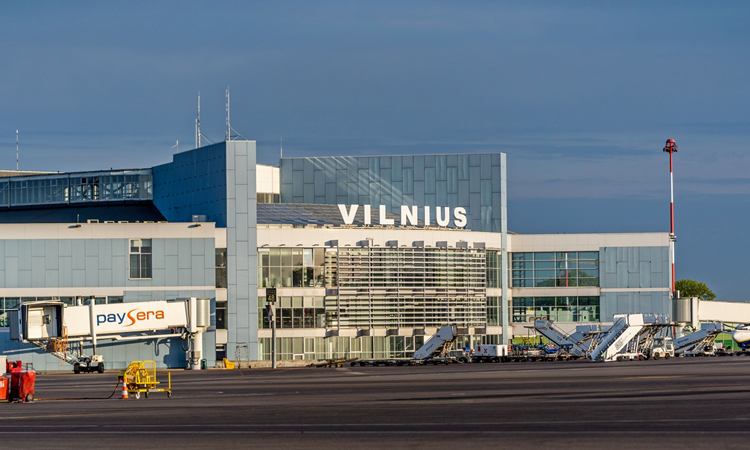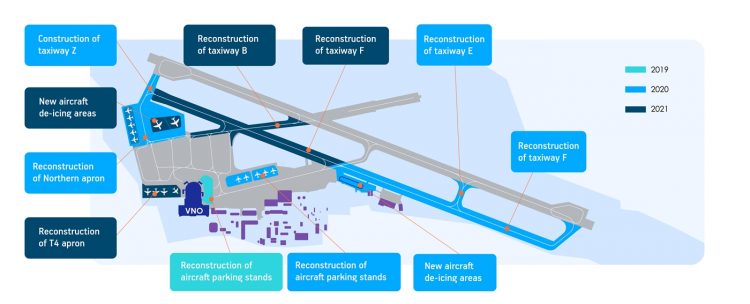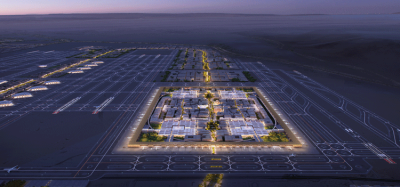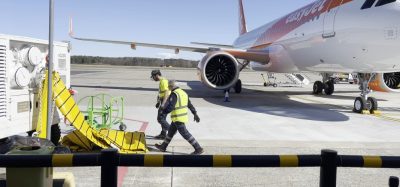Taxiway and apron renovation works begin at Vilnius Airport
- Like
- Digg
- Del
- Tumblr
- VKontakte
- Buffer
- Love This
- Odnoklassniki
- Meneame
- Blogger
- Amazon
- Yahoo Mail
- Gmail
- AOL
- Newsvine
- HackerNews
- Evernote
- MySpace
- Mail.ru
- Viadeo
- Line
- Comments
- Yummly
- SMS
- Viber
- Telegram
- Subscribe
- Skype
- Facebook Messenger
- Kakao
- LiveJournal
- Yammer
- Edgar
- Fintel
- Mix
- Instapaper
- Copy Link
Posted: 16 June 2020 | International Airport Review | No comments yet
Scheduled to be completed by the end of 2021, the renovation of Vilnius Airport’s taxiways and apron is part of the airport’s reconstruction programme.


Credit: Vilnius Airport
Vilnius International Airport (VNO) has announced that it has begun work on the renovation of its taxiways and the reconstruction of its apron, with the project planned to be completed by the end of 2021 without interrupting normal operations at the airport.
The main goal of the reconstruction project is to renew pavements, widen taxiways, create conditions for the taxiing of larger category aircraft and implement environmental solutions.
The total value of the contract is €34 million, with most of the reconstruction projects being partly financed by European Union (EU) funds. The scope of the project will exceed the runway reconstruction project that was carried out by Vilnius Airport in 2017, which cost €25 million.


Credit: Vilnius Airport
Head of Vilnius Airport, Dainius Čiuplys, said: “Airports are constantly undergoing renewal, as the existing infrastructure needs to be cyclically renewed and upgraded to meet aviation safety requirements and environmental needs of the current time period. Also, all investments are based on calculations that their service and payback should take about 10 to 15 years.”
During the first stages, taxiways F and E will be renovated in the western part of Vilnius Airport by the end of 2020. In parallel, construction works on the other side of the airport will continue during 2020, where the northern apron will be reconstructed and an additional taxiway will be built.
Development of the northern apron
One of the most important parts of the project is the reconstruction of the northern apron at the airport, which will include the installation of new asphalt pavement, concrete aircraft parking stands, parking stand markings, energy-efficient lighting, installation of new lights and more efficient surface water drainage solutions. In the future, the apron will also use modern Ground Power Units, which will serve aircraft more conveniently.
Arnas Dūmanas, Project Manager for the Vilnius Airport reconstruction programme, said: “Currently, we see that the volume of flights has significantly decreased, but these strategically important reconstruction works are focused on the future, which will undoubtedly see the return of a significant flow of planes and passengers to Vilnius Airport. The main challenge in organising these reconstruction works is to do everything in a constantly operating airport, not stopping normal activities. Therefore, the planning of operations and work flow was and will remain very important in the context of these works.”
Reconstruction of the apron will contribute to improving aviation safety by shortening the taxiing distance of aircraft and reducing noise levels and CO2 emissions from aircraft, which is directly related to the strategic goal of Lithuanian Airports to invest in environmental protection measures.
Renovation of taxiways
The contract works will also cover strategically important parts of the Vilnius Airport aerodrome – the renovation of taxiways and the installation of additional ones.
The purpose of the taxiway F reconstruction is to renew the pavements, to widen the taxiway – thus increasing its capacity to service higher category aircraft – to extend it and to create a faster line-up with the runway towards take-off or after landing. The purpose of the reconstruction of the B taxiway is to restore the worn-out pavements.
During the project, a new taxiway Z will be installed, which will connect the new northern apron with the runway threshold. The taxiing of aircraft on a newly constructed taxiway will reduce the occupancy and clearance of the runway; faster and straighter taxiing to the runway will result in improved flight safety and a reduction in aircraft manoeuvring time.
Related topics
Airfield lighting, Airport construction and design, Airside operations, Emissions, Noise abatement, Runways and pavements, Sustainability


















